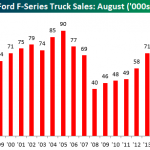We’re always trying to build a better mousetrap around here by adding non-correlated asset classes to our portfolio. While there is no “free lunch” in economics, true diversification is about as close as you’re ever going to get. And by “true diversification,” I mean adding assets to the portfolio that really do zig when the others zag. A portfolio of 100 stocks doesn’t offer much diversification benefit when the entire market rolls over.
At any rate, Dr. Phillip Guerra and I have cooked up a suite of alternative portfolios based on the principles of risk parity. We’ve been running our Active Risk Parity Portfolio With 7% Annual Volatility Target live since September, and we’ve backtested it to 1996.
The results aren’t too shabby, if I do say so myself. Average annual returns of 11.5% with a maximum drawdown of just 9.8% and a correlation to the stock market of just 0.24.
Rather than target returns — which are impossible to know with any accuracy in advance — we target volatility. While volatility will also fluctuate over time, we find it to be more accurate to target and also that it gives us a better handle on risk. The key to making money over time is first to avoid losing it.
I don’t consider this a replacement for a traditional long stock portfolio. In fact, most of the money I manage is long-only and dividend focused. But I certainly do consider this a nice addition to a traditional stock portfolio. With bonds not likely to offer much in the way of return any time soon, you need viable alternatives for the “40” in the old 60/40 portfolio of stocks and bonds. A risk parity model can certainly fill that role.
For more information on alternative portfolios in general, see here.


















Leave A Comment